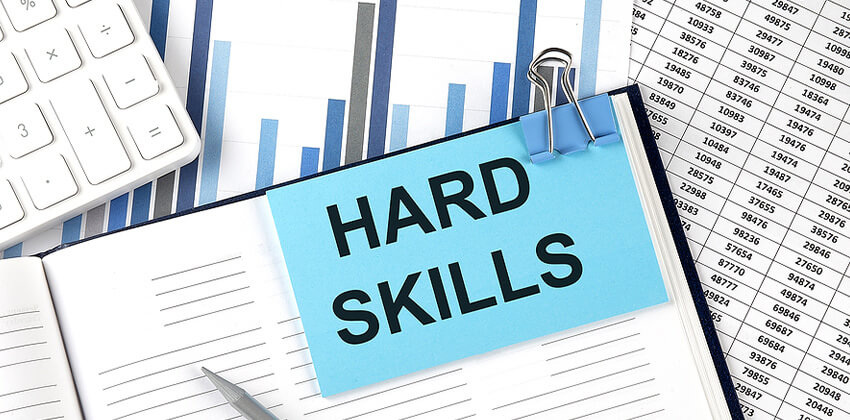
“I connected. Nothing happened.”
I work with a lot of frustrated job seekers who are at a loss on how to actually network.
It’s worth the time to consider —
What exactly is effective networking?
Going to another cocktail mixer, current event, or conference and just meeting people? That will sometimes pay off, but not always.
In a coffee meeting a few years ago, a woman I was meeting with for the first time started it off with “Let’s network.”
Then, she got out her phone, ready to type, and asked me who I knew at Facebook. I knew a few people.
As a headhunter, I had a personal database of over 7,000 people I had either met or spoken with over the previous 25 years, including people at Facebook.
But, why in the world would I tell this woman I just met who I knew there?
I knew nothing about her work. I knew none of her former bosses or peers. I could not endorse her in any way because doing so would have possibly put my reputation at risk. Avoidable networking failure.
Know Your Network
Which brings me to my first point —
Your real network is comprised of people who have worked with you!
I’m not saying you don’t connect to others, but reaching out to a stranger and expecting something immediately in return is unrealistic. (“I connected. Nothing happened.”)
Think about it — who else can really endorse you, and who else is going to take the time to refer you, except for the people who like and respect your work?
“He’s a good guy” is simply not enough today. It was enough 20 years ago, when we all had more time in the day and handled about 25% of the information we have flying at us today.
Gone are the days when you would have an informational interview and they would explore all the ways you might fit. Today, no one has the time, nor the attention span to follow through the way you would like them to, unless you make it easy for them.
So spell it out. And follow up with materials within minutes or hours, so they can remember what they were going to do on your behalf, which often includes sending it on with a note.
Networking Effectively for Job Search
Here is how to make it easy for your real network to know what you are up for and where you might fit:
1. Get your ducks in a row first.
Do the homework. Find out what positions are open, and make a list of all titles and functional areas in which you might fit.
Figure out from reading job descriptions what marketable skills you have, and which ones are in the most demand.
Notice common phrasing and updates of functional roles. Adopt modern vernacular used most often in the job titles and descriptions of the job you want. (This is called “personal SEO” and it is essential for visibility today!)
2. Update a master resume so a custom one is ready to go the same day someone asks for it.
This means you have several options for your summary statement on top, and 10 to 30 bullets describing your career highlights, accomplishments (with statistics describing percentage improvement), and areas of expertise.
For each custom resume, depending on size of company, scope of role, and technology being used, you will be choosing 5 to 10 of them to be on the top half of your resume.
3. Get your LinkedIn profile to work for you.
The photo is mandatory, and no mug shots please.
- If no one wears a tie in your business community, don’t wear a tie, and get a casual “walking across Google campus” head and shoulders shot.
- If everyone in your field has a formal business photograph, get down to the mall to get that one.
Make sure your headline reflects all areas of expertise you need to be known by.
- If you have been a VP, but are open to Director in a larger company, use the term “Leader,” or “Head of.”
- Make sure that at least the first 2 lines of your summary are keyword rich, so when people look you up, they immediately see you as a viable candidate.
4. Now, reach out to your real network on LinkedIn.
Everyone you have worked with and for. Don’t forget people you worked with in other departments. Don’t forget Admins, HR, people who worked for you, etc.
Many of them will have $300-3000 employee referral bonuses at their employers for referring you if hired. They want to help, but you have to make it easy for them.
If they are already connections, message them on LinkedIn with:
“Hi Carrie, Just wanted to let you know I am quietly considering a move. I don’t care much about title, but anything in the warehousing, distribution or logistics areas would be of interest. Let me know if lunch is possible for you, I would love to catch up.”
They will immediately see your profile, notice you look sharp, and notice the expertise you’ve developed since they last saw you. They will notice it because it’s in your headline and the top 2 lines of your summary (see #3).
More: How to Make Employee Referral Programs Work for You
5. If you are not connected to them on LinkedIn yet, you can fit some of the above message into your connection request.
Play with the number of spaces allowed. You can also use InMail, particularly if the person has a premium LinkedIn account.
“Hi Carrie, Given that we’ve known each other for many years, I’m suprised we aren’t connected on LinkedIn. Please accept this invitation to connect. I would love to catch up sometime… let me know if lunch is possible for you, or coffee. My treat.”
But, if it’s someone you know well, sending an email is better.
6. If they are working at target companies (or they have in the recent past and know people there), ask them out for lunch or coffee.
Your treat, at their convenience. This is real networking.
7. Next, reach out to key people you don’t know in companies you would like to work for.
Reach out to the obvious execs and managers who might be interested in you. If no response in 5 days, reach out to the head of HR or Talent Acquisition or People, and any recruiters at the company that have been there a while. I would skip the ones that move around a lot.
In this case, I would write something like —
“Hope we can connect, I admire your company very much and I follow it.”
They will look at your profile.
8. If you see a particular recruiter mentioned in an ad you would like to respond to, reach out.
Send an invitation to connect saying —
“I noticed your opening for the … and would be interested in pursuing it quietly. Is there a way to get my resume to you privately? It’s important for me to be discrete.”
If you don’t hear anything in 5 days, apply directly to the ad. Or don’t.
More: How to Connect with Recruiters on LinkedIn
9. If any of these new connections or old business friends ask for a resume, customize one, and send it ASAP.
Preferably respond within one hour if possible, but certainly before the business day is over. Save as PDF only, especially if you’re using Word templates.
Use the master resume mentioned above (#2), edit it down for this company or opportunity:
- You can look at their open ads to get some of their phrasing and emphasis, and make everything important work on page 1.
- Pick the most relevant accomplishment bullets.
- Make sure Education, Technical Summary, Product Knowledge, Business Subject Expertise, and/or Industry is on page 1.
- Employment or Corporate or Career History with dates has to be on page 1.
Everything you need to “name drop” to get their attention needs to be on page 1. Don’t make the reader hunt for anything. They can get more detail on pages 2-3, but your viability as a candidate has to show immediately.
No fonts smaller than 11— it has to be readable on a phone. Keep keywords on the left margin when possible.
10. For new jobs at large companies, focus on the internal recruiting staff.
For large companies, most talent search is restricted in the first 3-16 weeks to internal talent teams only. This is sometimes true for smaller companies too.
A good headhunter (external recruiter), who is very knowledgeable about your niche, can be very helpful too IF you have NOT forwarded your resume to anyone at the company another way.
So, if you find an external recruiter who really knows their clients well (not just a resume submittal house), network with them as well. Give them an exclusive on your candidacy — let’s say 2 weeks — to set up interviews:
- Make it very clear they do not have permission to send your resume anywhere without your knowledge.
- Nor do they have permission to edit it or post it on any recruiter “sharing” board.
(More about the different types of recruiters and how to work with them)
Seeking New Opportunities — CAREFULLY!
A note about “Seeking New Opportunities” or the newer hashtag for headline placement #ONO (Open to New Opportunities.) There is no consensus on whether this helps you or makes you appear desperate.
Some recruiters love it, and jump straight to you. Others assume you were one of the first laid off, and might not be the best.
My suggestion would be try without it, then use it for a couple weeks and see what happens. Do not leave it up forever though.
Do NOT use #ONO while currently working!
Quietly staying up-to-date on opportunities when currently employed is very smart, but employers tend to become very unhappy to discover that a current employee might be interested in leaving. The result can be job loss or a career dead end with that employer.
Here are 2 additional methods of being quietly noticed, without an exhaustive message campaign.
1. Make your Profile updates/changes public.
Adjust your Privacy Settings on LinkedIn since, by default, most of us keep the notifications of Profile changes in the “Off” position. Then, add new skills, specialties, business knowledge and expertise items to your headline, titles, and/or skills section.
Those little changes will be broadcast.
If your current employer wants to know why you are tweaking at all, just tell them your sister-in-law recommended it for internal promotion possibilities.
If you are a network manager, for example, and your current LinkedIn Headline is “Network Manager,” you might want to change your current title to “Network Manager, Cloud Services, Communications, AWS, IT.” If you have done your research, you will know what terms are showing up as relevant and current.
2. Endorse your LinkedIn network members for their Skills.
The best way to get endorsements in your Skills section is also a great way of reminding people that you are reachable. Endorse your professional friends, and they will see that you did.
Without messaging anyone, you are notifying your network you are still around, where you are, and that you have added skills since the last time you talked. In many cases they will look at your profile. And in many cases they will endorse you right back.
Endorsement numbers count in algorithms, too. That helps all of your networks find you faster and think of you more often.
The Bottom Line:
Networking is the most effective method of finding a job! Building your network may take time, but once you have a good network, keep it live and continue to grow it. Employer’s favorite way to fill a job is through employee referral programs, and the best way to get referred (or to make a referral) is to tap someone in your network.
More About Successful Job Search:
- 4 LinkedIn Ice Breakers
- Yes! You CAN Enjoy Networking: 7 Strategies for Painlessly Building Your Network
- How to Nurture Your Network and Empower Your Career
- Guide to Effective Resumes and Cover Letters
- Guide to LinkedIn for Job Search
- Guide to Personal SEO
- How to Make Employee Referral Programs Work for You
About the author…
Linda Tuerk is a veteran headhunter who has significant experience getting interviews for older candidates in Silicon Valley. Linda shares her 30+ years headhunting experience to help job candidates. “From Stanford to San Quentin,” she has helped thousands of people navigate their job searches in technology and other sectors nationwide. Linda specializes in finding the most attractive way to tell the truth. She can be contacted via LinkedIn or at 650-210-9980.
Don't forget to share this article with friends!




